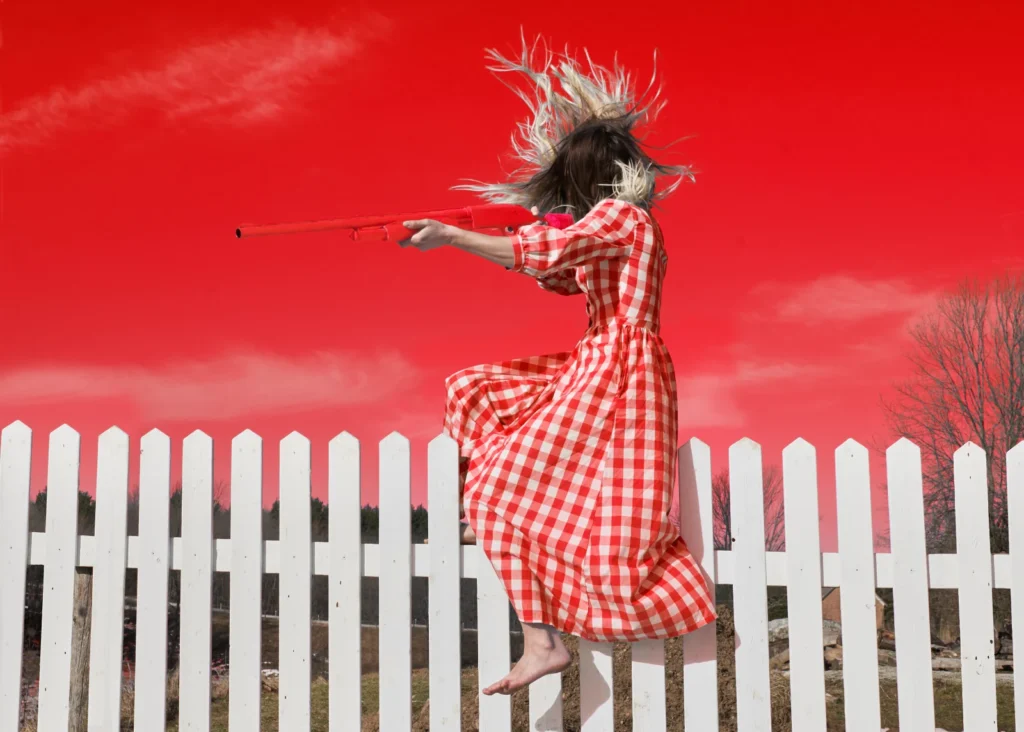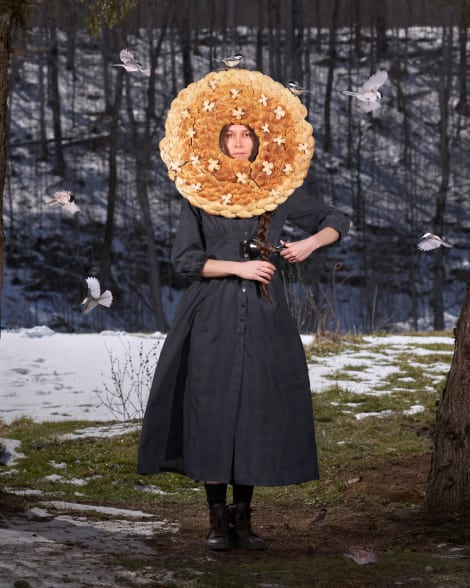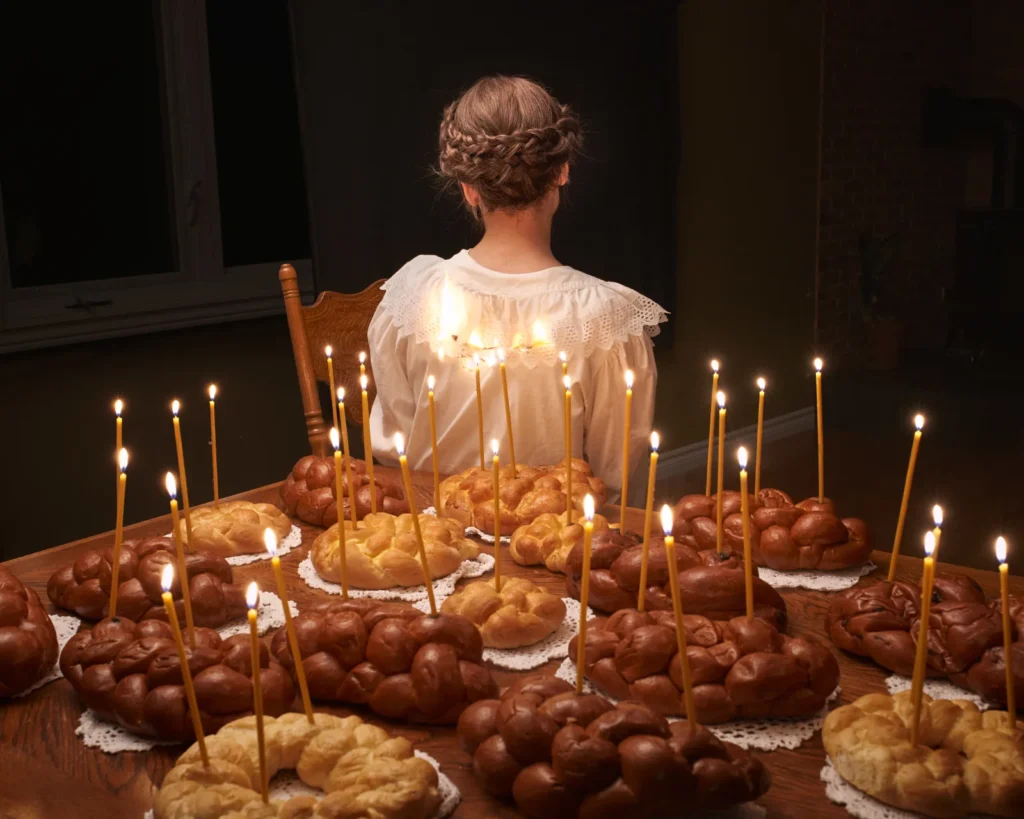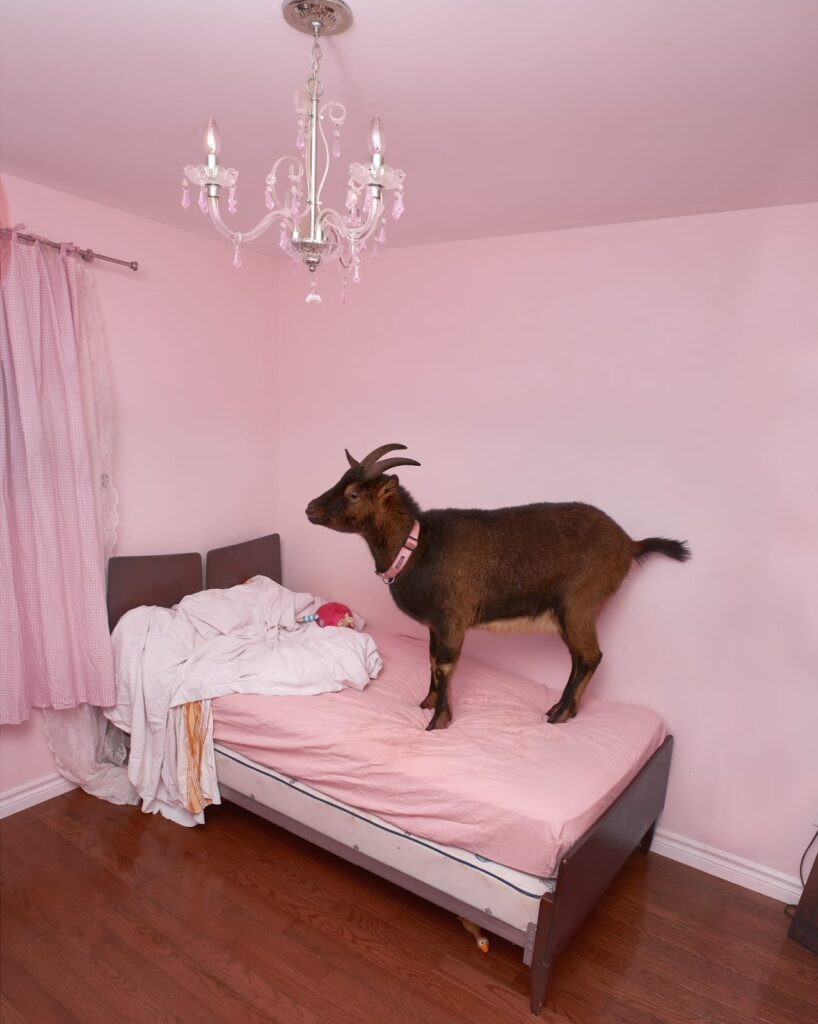In this multi-media solo exhibition, titled Home: Between Worlds, artist Sage Szkabarnicki-Stuart explores her heritage using contemporary elements and a fresh perspective. Through the practice of self-portraiture, Sage outlines her life of transition, tradition, and rituals through the eyes of her kin, particularly her grandparents. She focuses on their life in Ukraine and in rural Canada.
Sage began to experiment with photography when she was 22, living in Montreal. But since then, like her grandparents, she made her own life-changing decision to move away from the city to a remote rural homestead, where she was able to experience what it is like to live in the countryside. While learning and unlearning habits of the past, Sage’s art takes this opportunity to document her present life resulting in a great leap in her work. A good example is “Centrist IV”, staged in a rural area, where she is sitting on a fence using things such as a blower for her hair, a farm dress and no shoes at all. Lately, she is creating images very different than she used to.
Sage Szkabarnicki-Stuart, Centrist IV, 2024, archival pigment print & hand applied varnish, 48 x 35.75 in.
Living in the city and now on a farm can really make a person contemplate past and present; so, Sage was able to build a new connection with her family’s past. She was mostly raised by her grandparents and this exhibition is a beautiful tribute to them.
Sage Szkabarnicki-Stuart, Korovai, 2024, archival pigment print, 36 x 48 in.
Sage’s work will take you by surprise because you will realize her hands-on process and traditional practices show how she cherishes her cultural traditions. Some of us do not believe in materialistic possessions and when we are displaced or forced to leave our homes and all we had behind, we still believe that wherever we go we can build a home again. As long as we treasure our ancestors and keep their teachings in our hearts, it does not matter what we carry in our bags. Sage shows how she’s done this in her work.
Some of her photographs evoke memories of family gatherings and the sweet smell of crispy breads. Especially when she depicts Eastern European scenes, she poses women in her work to show her ties with her heritage. It is always important to remember the traditions of generations past, especially when facing displacement or immigration, so the new generations will remember their origins. In images like “Bread Burning,” Sage reflects heavily on family traditions, many of them revolving around food. Baking bread from scratch is a time consuming process. In this composition the artist depicts her successful and failed attempts at baking braided bread. Braided bread is a strong symbol in many religious traditions that connects and ties families together, regardless of where we are. These values hold strong like a braid. Bread is also part of rituals that involve blessing and it has magical properties as it is baked using fire that our mothers, and the women before them, lit. Flames keep us alive and enlighten our family history for generations to come.
Sage Szkabarnicki-Stuart, Bread Burning, 2024, archival pigment print. 36 x 48 in.
In “Girls Room,”Sage tells a story of her childhood. When they moved into their new home, she was greeted by abandoned dairy goats roaming the house. One of them was wearing a pink collar, indicating that it was kept as a pet by the daughter of the previous owners. This photography portrays a piercing narrative of nostalgia. This sense of an abandoned place made the artist think about how hard it must be to get used to an empty house where there was once a home filled with life and laughter. And now that there are people living in the house again, how challenging it is for them to make themselves comfortable, even with all of those goats around and some of them not very friendly at first.
Sage Szkabarnicki-Stuart, Girls Room, 2022, archival pigment print, 30 x 371/2 in
Sage Szkabarnicki-Stuart’s exhibition “Home: Between Worlds” is a beautiful tour along memory lane and a thoughtful trip between past and present. It is a homage to people who had to leave their countries, but however painful it was, they found a new land and built a home there, carrying their cultural and religious traditions with them, so they are at HOME again.
Polyna Alexseev
Images are courtesy of Rukaj Gallery
*Exhibition information: Home: Between Worlds, May 4 – 18, Rukaj Gallery, 384 Eglinton Ave W, Toronto. Gallery hours: Mon – Sat 10 am – 6 pm.
The exhibition is part of CONTACT Photography Festival.




